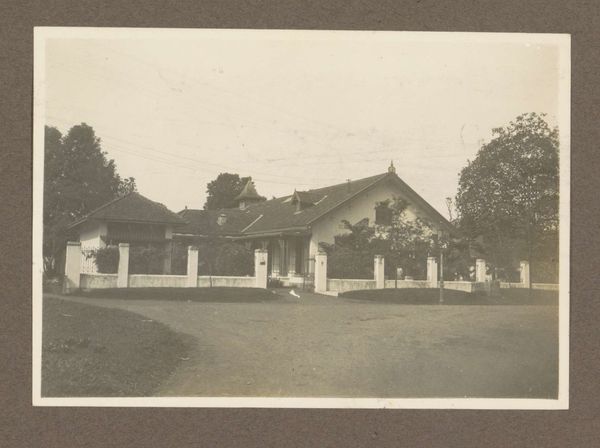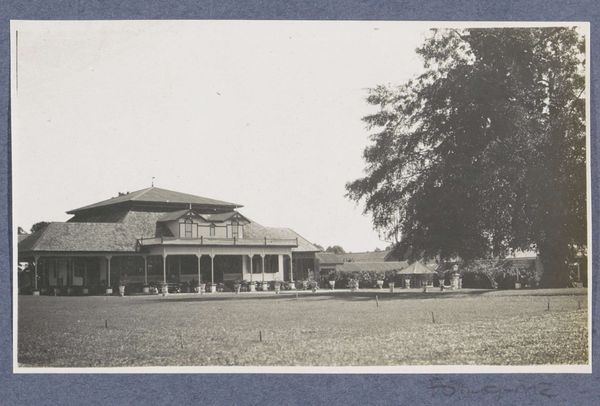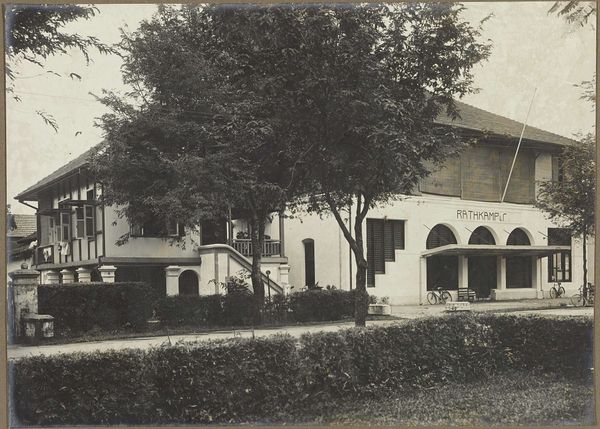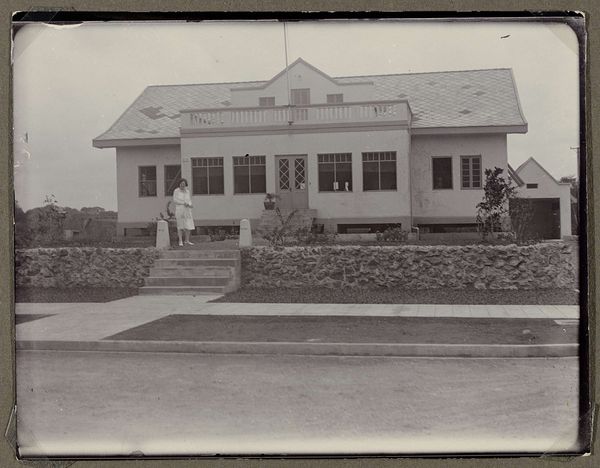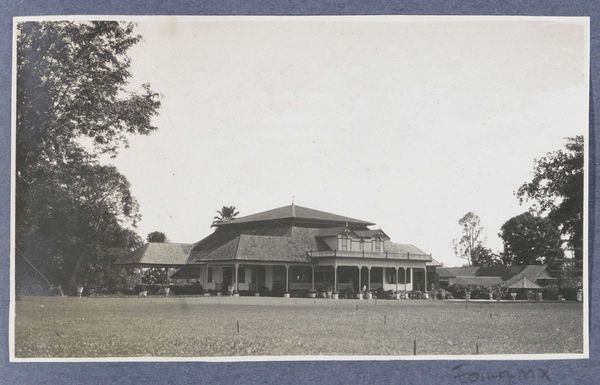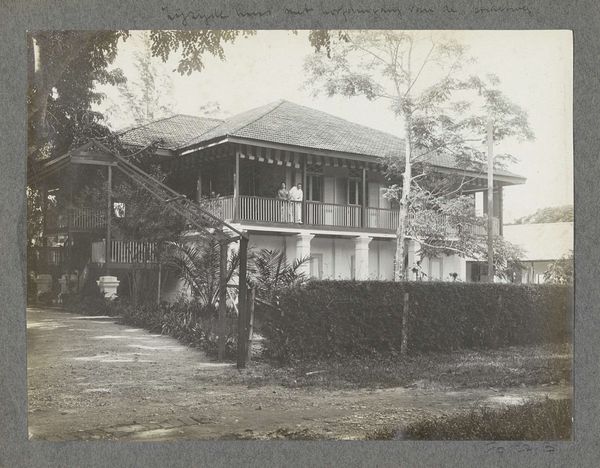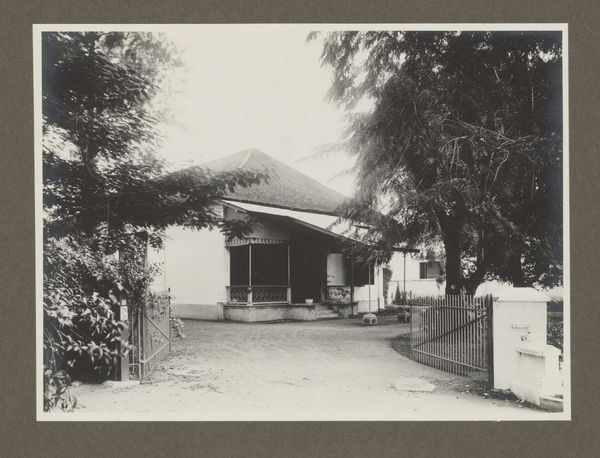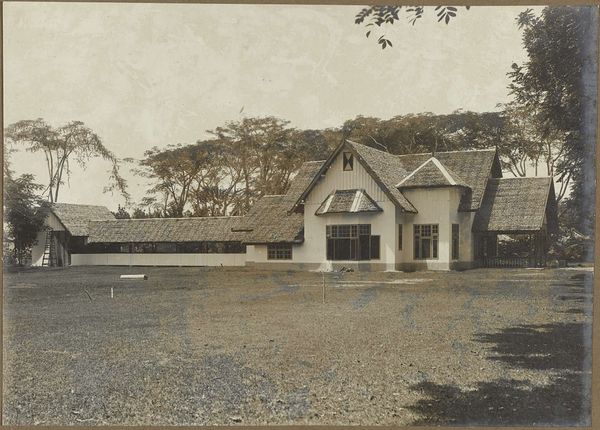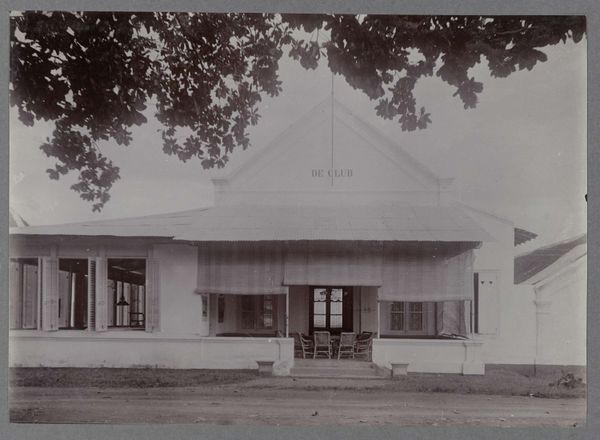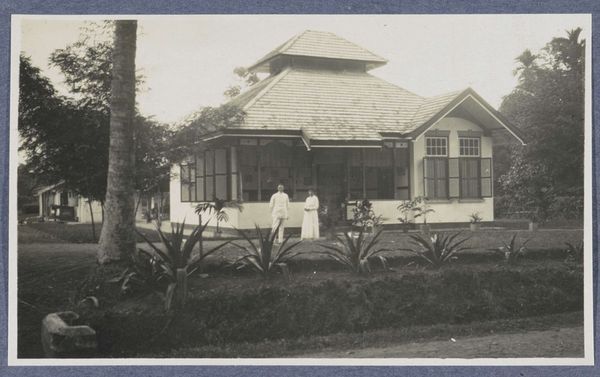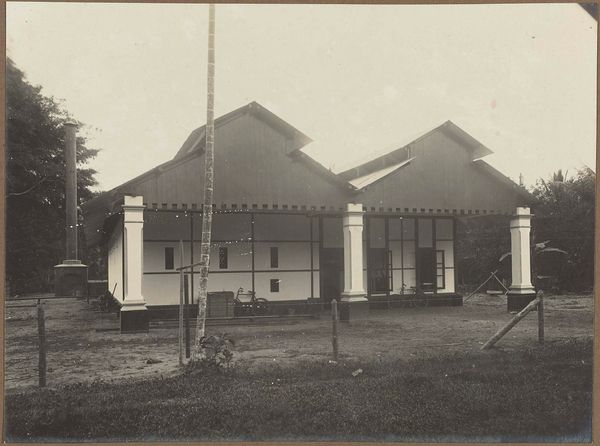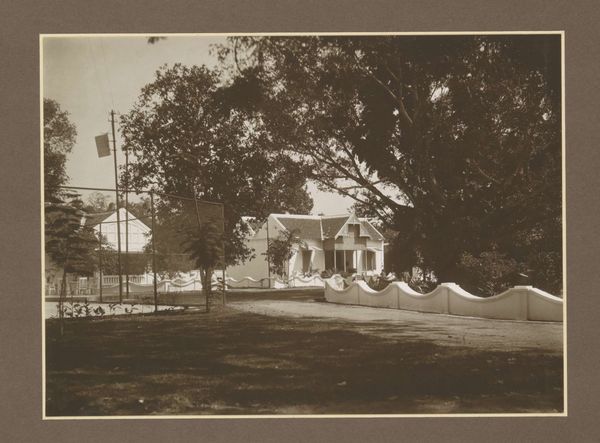
Exterieur van het assistentenhuis op het Medan Estate van de Deli Maatschappij op Sumatra c. 1900 - 1920
0:00
0:00
photography, architecture
#
dutch-golden-age
#
landscape
#
photography
#
architecture
Dimensions: height 81 mm, width 139 mm
Copyright: Rijks Museum: Open Domain
Curator: This photograph, whose authorship is unknown, is titled “Exterieur van het assistentenhuis op het Medan Estate van de Deli Maatschappij op Sumatra.” It's estimated to have been taken sometime between 1900 and 1920. Editor: My immediate reaction is one of almost unsettling calm. There’s a clear symmetry in the architectural structure itself, further reinforced by the calculated framing with those enveloping trees. Even in monochrome, the image possesses a certain depth. Curator: Indeed. The composition does invite quiet contemplation, but it also hints at the socio-economic structures of the time. This photograph offers a glimpse into the world of Dutch colonial presence in Sumatra. The Deli Maatschappij, a tobacco company, wielded significant power, shaping both the landscape and the lives of those who lived and worked there. The residence pictured speaks to that power dynamic. Editor: You make a valid point, but can we consider for a moment just how the tiered roof catches and reflects the light? The geometric precision, particularly juxtaposed against the more organic foliage, makes it undeniably beautiful. Even without context, its formal qualities draw me in. The interplay between light and shadow defines the space, creating volume within a flat image. Curator: That’s a wonderful observation. And seeing the house in the landscape in that way makes you consider the relationship with place, too. The image is also fascinating in its ambiguity: on the one hand, you can see the deliberate projection of European domesticity. But then you see traces of adaptation to a different climate, hinting at a blend of architectural styles—perhaps less a symbol of imposition, more of an uneasy negotiation. Editor: I can concede there is tension created through this image’s representation of power—that symmetry and deliberate framing suggests a controlled view and even domination. Curator: The visual elements are indeed deeply enmeshed with historical narratives. Looking through photography offers potent insights into colonial dynamics, making one aware of the impact of such historical imbalances on our world today. Editor: So true, bringing together history with close visual interpretation adds dimensions to the whole.
Comments
No comments
Be the first to comment and join the conversation on the ultimate creative platform.
